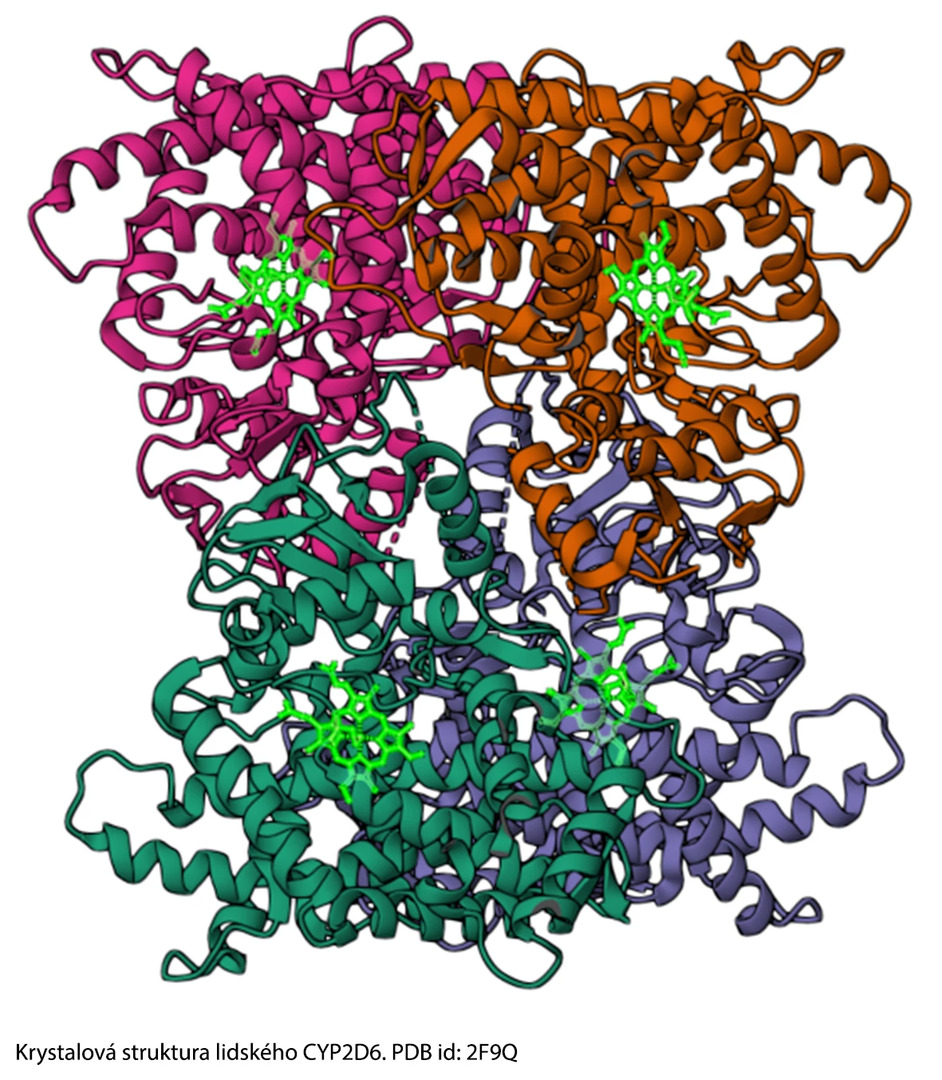CYP Enzyme? Cytochrome P450 2D6 and Drug Metabolism
The CYP2D6 isoenzyme of cytochrome P450 participates in the metabolism of approximately 20% of commonly used drugs. Genetic variants of this enzyme are very common, leading to significant inter-individual variability in drug metabolism rates. Let’s take a closer look at one of the reasons why the same drug may work very well in one patient, not at all in another, and may cause serious side effects in a third.
Cytochrome P450 – It's a Family Affair!
The evolutionarily ancient superfamily of cytochrome P450 (CYP) derived its name from the ability of this heme protein to absorb light at a wavelength of 450 nm. The human genome contains 57 potentially functional CYP genes, 12 of which play a role in the metabolism of 70–80% of commonly used drugs.
The spatial structure (see image) of CYP family proteins is highly conserved, with a heme complex found in the enzyme's catalytic center, around which the protein structure forms a channel for substrate recognition. Mammalian cytochromes are membrane proteins embedded in the phospholipid bilayer of the endoplasmic reticulum (ER) or mitochondria.
Image. Crystal structure of human CYP2D6 composed of 4 subunits. The heme complex is shown in neon green.

Promiscuous CYP2D6
The human CYP2D6 gene, located on the long arm of chromosome 22, is relatively short. Its 9 exons code for the CYP2D6 protein, which localizes to the ER and is expressed primarily in the liver, brain, intestinal tissues, and lymphatic cells.
Although CYP2D6 makes up only 2–4% of total hepatic cytochromes, it is a key player in drug metabolism, responsible for converting approximately 20% of commonly used drugs. It is involved in the metabolism of a variety of substrates, from analgesics (codeine, tramadol) to antidepressants (paroxetine, tricyclic antidepressants) and antihypertensives (metoprolol, bisoprolol) to anticancer therapies (tamoxifen). It's clear that CYP2D6 is a promiscuous pharmacogene affecting therapeutic responses across a wide range of medical specialties.
Fast or Slow Metabolizers?
Different variants of the CYP2D6 gene affect the function of the translated protein, which is reflected in the rate of drug metabolism in individuals with different CYP2D6 variants. Most described variants are due to single nucleotide polymorphisms (SNPs) that may be located in coding regions of the gene (leading to single amino acid substitutions or shortened protein variants) or in introns or promoters (affecting protein expression or mRNA splicing).
The activity of the resulting protein is determined by the gene haplotype (a set of variants inherited together) and the drug metabolism in an individual by their specific diplotype (a pair of gene alleles inherited from the mother and father). Currently, individuals are classified into groups by
Did you like this article? Would you like to comment on it? Write to us. We are interested in your opinion. We will not publish it, but we will gladly answer you.
